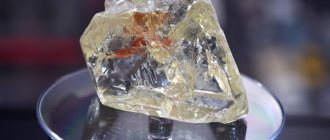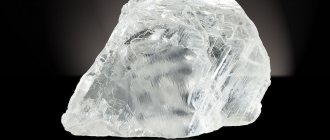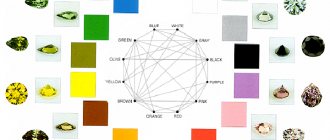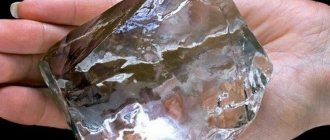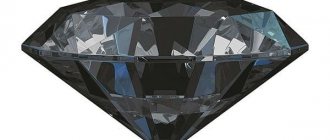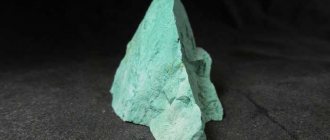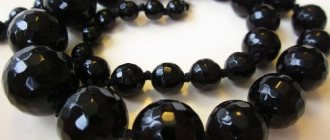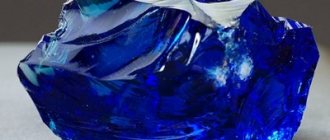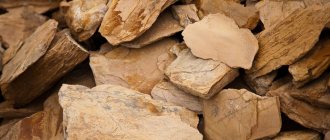Diamond is a gemstone that is formed at very great depths under the influence of high pressure. Getting a gem is a very difficult task involving special equipment and specialists. But it’s even more difficult to determine that exactly these tons of processed rock contain diamonds. Finding a mineral does not immediately mean getting a diamond - the most expensive jewelry stone. The crystal undergoes a thorough quality check, and the final stage is cutting, which sometimes takes more than six months.
About the characteristics
The aesthetics of a stone greatly depends on how the atoms in the crystal lattice are arranged. It has a cubic shape, with four carbon atoms located in the center and eight at the vertices of the cube. In addition to carbon, small inclusions of iron, magnesium and calcium can be found in its composition.
The stone is varied in color. Mostly, crystals without color or a yellowish tint are found or mined. Sometimes they are blue, with a red tint or blue, pink, gray, brown and black. Green diamonds are extremely rare. Crystals are also classified according to their degree of purity. Most stones have uneven coloring, sometimes one color dominates.
Diamond is a mineral of the highest hardness with a 10-point rating on the Mohs scale, compared to other stones. From Greek it is called “invulnerable”. But if you drop it, it will break. You can make it burn by using a simple magnifying glass and heating it to 700°C. For the ancient Greek rulers, this stone personified power.
There are no two identical stones in the world. Each of them has its own unique “inclusions” that make it unlike other stones. Inclusions are internal voids, foreign substances and cracks. Diamond is not afraid of strong acids, but an alkaline solution of soda or saltpeter can oxidize the gem.
The stone has luminescent properties that allow it to serve as an indicator of radioactivity. At the same time, the stone begins to emit light pulses and a weak electric current.
Features of stones
Each pebble has its own characteristics, called “inclusions”. It is they who give it uniqueness and difference from its peers.
Inclusion is considered:
- the presence of voids inside;
- inclusions of foreign substances;
- cracks.
Many people are interested in the question of how diamonds are processed. The stones are so strong that they can only be cut using the same stones. Diamond is called the hardest, but at the same time fragile mineral of natural origin. It breaks easily when dropped. It can be set on fire using an ordinary magnifying glass. The combustion temperature is 700°C and above.
Strong acids are not capable of harming the mineral and deteriorating its appearance, structure, or color. Soda and saltpeter, or more precisely, their alkaline solutions, have an oxidizing effect on diamonds.
The gem has luminescent properties, which turns it into an indicator that determines the presence of radioactive particles. Their presence is indicated by electrical impulses and light flashes.
A little about mining
Diamond deposits are located in Russia, South Africa, the Republic of Congo and Namibia. Australia, Canada, Angola and Botswana boast small deposits. The development of diamond deposits is a long and expensive process.
Until the second half of the 20th century, gems were mainly mined from minor deposits that appeared as a result of rock faults. Everything was done in the same way as during gold mining: river sand was sifted through a sieve and then washed. Now the crystals remain mainly in “kimberlite pipes.”
Mining is carried out in 3 stages: a 600-meter pit is punched with the help of explosives, a shaft is laid and ore begins to be mined, which is later delivered to the factory for subsequent grinding and washing. Then they cull, choosing the desired type of stone using water and x-rays. And after this, the diamonds are handed over to cutters and jewelers.
Diamond: a 3.5 billion year story
It is difficult to indicate with an accuracy of a year the day and hour at which the discovery of diamonds was carried out. Suffice it to say that the history of this mineral began approximately 3.5 billion years BC. e. Really advanced age? It was at this time that, apparently, the diamond mineral was formed in the Earth's mantle. It took another 2.5 billion years for the formation of so-called kimberlite pipes - special diamond-filled zones that remained where lava flows erupted.
Their release occurred approximately a million years before the beginning of our era. True, no one can still give a clear answer to when diamonds began to play an important role in the life of human society. Our primitive ancestors were certainly not interested in them. But further?.. It is also not entirely known when the diamond began to be treated as a jewel. But some milestones of history can still be traced.
- In 800 BC. e. Diamonds were discovered in India. They were used in religious rites by Hindus and endowed the stones with magical powers. Statues of gods were decorated with diamonds, and talismans and amulets were made from them. These were precisely uncut ones, i.e. rough diamonds, lightly polished, but nothing more. The Hindus strictly kept the secrets of diamond mining and for many centuries were the only suppliers of precious stones.
- In 327 BC. e. (according to other sources - in the 5th-6th centuries BC), according to rumors, the Greek commander Alexander the Great brought stones from India to modern Europe. But mining still occurred only in South Asia.
- In the Middle Ages , already in Europe, diamonds continued to serve as talismans. It was believed that amulets with this stone bestowed strength and firmness on warriors, could protect them from the evil eye and preserve their health. In fact, the penetration of diamonds into the medical field is associated with the belief in healing from bad illnesses. And the Romans knew diamonds as parts for very durable tools.
- In the 14th and 15th centuries, the first methods of cutting diamonds appeared. Obviously, it is at this moment that he begins to be perceived in society as a gem. True, at the same moment it gradually loses its mystical aura. Superstitious people believed that processing diamonds kills their magical properties.
- In 1454, the first diamond was born. It was made by the jeweler of Duke Charles of Burgundy. But a diamond was not considered a piece of jewelry back then. The warlike duke decided to decorate his armor with a sparkling stone so that the radiance of the diamond would blind his enemies and force them to flee from the battlefield. The fashion for decorating armor with diamonds turned out to be long-lasting. At the same time, the fashion appeared to wear diamonds at court. The legislator turned out to be the charming favorite of the King of France, Agnes Sorel, who had an impressive collection of stones. This pleasant innovation was immediately picked up by all the ladies of high society.
- In Russia, royalty kept up with Parisian fashion. Thus, we know at least about the diamond cufflinks of Tsar Michael, who ruled in the 17th century , and about Catherine II’s passionate love for diamonds. They say that the empress played cards with enthusiasm, and diamonds were the bets in the games.
- In the 19th century, diamond fever swept Europe and the world. By that time, Indian diamond reserves had depleted, and Brazil and South Africa took over. Diamonds have also been found in Russia, although only since the mid-19th century. The largest deposits are considered to be the Middle Urals, Siberia, Yakutia and the Arkhangelsk region.
- In 1910, a method of cutting and polishing diamonds appeared, which is still used today.
Quality and shape
According to statistics, only a quarter of the diamonds mined in the world are used by jewelers. The purest and highest quality gems are turned into jewelry. Stones of irregular shape, with defects or foreign impurities are called “technical” and are used in production. They are ground into diamond dust, which is then used to make an abrasive for polishing diamonds.
Authentication
Sometimes the question arises about how to check a diamond for authenticity. After all, its high cost is an excellent reason for creating fakes and various imitations passed off as a real crystal. You can do this with the help of a specialist or yourself, at home.
How to determine the authenticity of a diamond:
- According to rudinist - a narrow boundary dividing a faceted crystal into upper and lower parts. It should be matte. Transparency indicates artificial origin.
- Hardness. Real diamond leaves marks on glass surfaces. It also scratches other minerals such as sapphires and rubies. The only exception to this method is moissanite, which has a hardness similar to diamond.
- Glitter and refraction of light. A real diamond sparkles, but not as much as moissanite. A natural crystal differs from fiant and zircon in its light refractive index: if you place the stones on a printed text, for example, a page of a book, you will not be able to see the letters through the original.
- Defects and inclusions. They are present in real stones and are absent in fakes, but in no case are they cracks on the surface, scratches or chips. What is diamond clarity →
- Light scattering and ultraviolet. A beam of light directed through a fake will remain just as intense. A real diamond glows under ultraviolet light.
- Marker drawing. A line drawn with a felt-tip pen or marker on the surface of a gemstone will be clear and even, whereas on a fake it will be blurry.
- Exposure to acids. Submerged in an acidic solution, a real diamond will endure the test with dignity, emerging unharmed.
- Indelible. It is difficult to erase a real stone, so you will have to examine the edges of the stone that has raised doubts. If they are smoothed out and appear erased, it is a fake.
Diamond rightly deserves the title of a unique and irreplaceable stone in the industry. At different times it was used for various purposes, but only when it gained jewelry interest did it become truly expensive. Its cost depends on the processing method, shape and changeability of fashion, but demand always remains high and is unlikely to ever change.
How diamonds become diamonds
Everyone knows that a cut diamond is called a diamond. What shape it will be given depends solely on its natural characteristics. An uncut stone is dull and ugly. The work of a jeweler turns it into a sparkling, smooth and expensive diamond.
Stones intended for cutting must be of the appropriate size, since 40 to 60% of its volume will be lost during processing.
Jewelry began to work with various precious stones long ago, but they learned to cut diamonds only 600 years ago; before that, for example, rings were made with untreated natural diamonds. And even when they learned how to do this, the process remained difficult and painstaking, requiring the implementation of the various stages of processing the gem in order.
Diamond Processing Methods
There are two options: laser or manual.
When a diamond is created by hand, the following steps are taken:
- Split. Based on the marks that the specialist made during the initial examination, notches are made on the fixed diamond with another crystal. Then they are hit precisely, and the stone splits.
- Sawing Here the diamond is fixed with gypsum or limestone on a special copper head that is clamped into a sawing machine. Sawing is done with a very thin disk lubricated with abrasive paste. It consists of oil and diamond dust. The process is one millimeter per hour.
- Rounding the surface using another diamond.
- Cutting. For bevelling, the stone is fixed in the clamps of a grinding machine using a quadrant in such a way as to achieve the desired angle relative to a steel grinding disc lubricated with abrasive paste.
Since the development of technology does not stand still, the jewelry industry has also received new opportunities for processing rough diamonds. In this case, a cutting method using laser equipment is used. The stone for cutting is examined by a specialist who decides what to do with it. Then everything happens in the same way as during manual processing.
Using laser processing, you can achieve the desired shape of stones. The downside is a significant reduction in the weight of the stone compared to manual processing.
Is it possible to buy rough diamonds?
Many jewelry stores have begun offering rough diamonds in addition to polished and faceted diamonds. You can buy such a diamond - either free or set in a piece of jewelry.
So why buy a rough and rough diamond?
On the one hand, they are much cheaper than cut diamonds of similar color and clarity.
And let's not forget that a rough diamond will stand out in appearance, as people are used to seeing mostly polished gemstones in jewelry.
The downside to buying a rough diamond is that its brilliance and sparkle will be much lower than that of a cut diamond.
Why is that?
When a jeweler makes a cut, he shapes the facets so that the light entering the stone reflects off its walls, giving it a more brilliant appearance.
This effect is not present in rough diamonds. So when deciding whether to buy a rough diamond, weigh its unusual appearance and low price against its relative lack of brilliance, and decide which is more important to you.
Distinctive Features of a Rough Diamond and a Diamond
One carat of uncut diamond is relatively inexpensive, around $100. But the cost of a diamond made from it will be several times higher.
The price may be affected by the type of cut that was given to the stone after processing. It can be round and fancy. Oblong diamonds take the shape of a marquise, a drop or a pear, an oval and a heart.
Transforming a rough diamond into a rounded diamond is a rather long and labor-intensive process that requires very careful attention to maintaining all proportions. This, in particular, determines the high cost of the diamond.
Diamond
Diamond has various properties. It is an indispensable material for jewelry production and other industries. Diamond conducts heat very well, cuts glass and is wetted by fats, so the marker is able to leave a solid line on the surface of the diamond, unlike fakes, where it blurs.
Diamond
The authenticity of a diamond is determined by a rudinist, who divides it into top and bottom. It doesn't have to be transparent. Matteness is a sign of a real stone. A real diamond has sparkle, but not as much as moissanite. The printed text directly underneath cannot be seen through the diamond, unlike with fakes.
A real diamond will glow when exposed to ultraviolet light. And, of course, the facets of a real diamond are very difficult to damage.
An uncut crystal does not have a high cost, which should be taken into account when purchasing jewelry. Fraudsters often use the name “diamond” itself, causing uncomprehending buyers to spend large sums on purchasing an almost fake.
What are rough diamonds?
These are stones that were not processed after they were found in the ground. In general, diamonds sold in jewelry stores have been cut to give them a specific shape and also polished.
Rough diamonds, on the other hand, are uncut and unpolished, and they have not been altered in any way since they were mined. They are also referred to as rough diamonds.
Typically, after natural diamonds are mined, they are distributed based on quality.
High quality rough diamonds that are suitable for jewelry are sent to professionals for cutting.
Low quality stones are used in industry due to their physical properties and characteristics.
Processing and cutting
An uncut diamond is not as beautiful and is valued lower, so it is processed - cut. Processing jewelry is very difficult because there is no substance harder than diamond. To give the stone the correct shape, cast iron discs coated with diamond dust are used.
There are three types of cut:
- diamond - the crystal is given a round shape, triangular or diamond-shaped faces are arranged in a checkerboard pattern:
- rectangular - the faces are triangular or trapezoidal, arranged in steps;
- rose - this is how small crystals are cut.
The beauty of a diamond is best revealed with a round cut. Work on one crystal takes from 3-5 days to several months. It depends on its size. Crystals are left uncut for technical purposes.
Watch the video to see how the mineral is sawed and processed:
History and origin of the mineral
According to scientists, the age of this mineral ranges from 100 million to 2.5 billion years. The main theory of their origin is magmatic. At lithosphere depths of more than 100 km, under high pressure and high temperature, carbon atoms take the form of cubes. This is how a diamond is formed.
Natural diamond comes to the surface of the earth through volcanic pipes - kimberlite and lamproite. It is also believed that the stone is formed as a result of the collision of large meteorites with the earth.
In Russia, the first diamond was found in the Perm province in 1829. It was found by the serf Pavel Popov, a fourteen-year-old boy. He panned for gold at the Krestovozdvizhensky gold mine and discovered a precious stone in a tray.
Then the boy led the expedition of the German scientist Alexander Humboldt to this place. Over 28 years, 141 stones with a total weight of 60 carats were found here.
In 1897, the stone was discovered near the Siberian town of Yeniseisk, also while washing gold-bearing sand. Its size was very small, so funds were not allocated for further development of the field.
